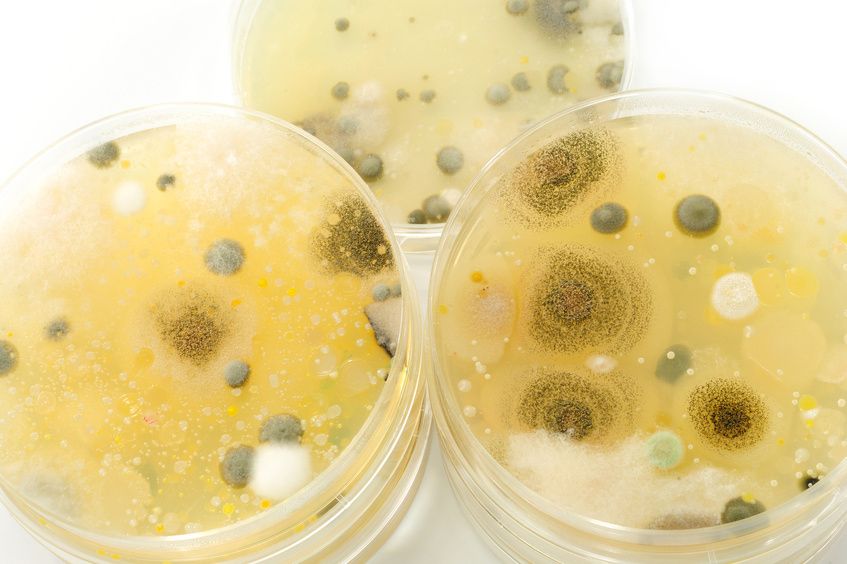
(Vienna, 30 September 2016) A research group at MedUni Vienna has been using Matrix-Assisted Laser Desorption/Ionisation Mass Spectrometry (MALDI-MS) for identifying fungi and yeast cultures. For the very first time, they have tested the potential of using cellular lipid profiles as biomarkers for characterising yeasts and filamentous fungi (MALDI Lipid Phenotyping), as an alternative to "protein biotyping".
Whilst MALDI-MS is already routinely used for identifying bacteria, its application for diagnosing fungi (e.g. yeasts and filamentous fungi) is still in its infancy. By using multi-variant statistics and comparing it with genotypical methods, the group led by Gerald Stübiger was able to show that the lipid profiles allow differentiation of closely related strains of fungi, which only differ from each by virtue of certain lipid molecules.
Matrix-Assisted Laser Desorption/Ionisation Mass Spectrometry (MALDI-MS) represents a robust, sensitive, cost-effective and versatile method of analysis. One advantage of this technique is its ability to simultaneously detect various molecules, such as proteins, lipids, etc. in biological samples (e.g. cell culture, tissue, body fluids, etc.) and so produce a "biomarker profile". This makes MALDI-MS particularly attractive for the purpose of clinical diagnostics.
MedUni Vienna’s Department of Biomedical Imaging and Image-guided Therapy is working on developing this technique and establishing it for various applications at MedUni Vienna. "We managed to take an important step in this direction in 2015 when we established the ‘Laboratory for Clinical MALDI Applications’ within the K1 Center for Biomarker Research in Medicine (CBmed)," explains study author Gerald Stübiger. "We are therefore delighted to present this work from the field of microbiology, which arose out of a collaboration with colleagues at the University of Natural Resources and Applied Life Sciences in Vienna, as well as commercial partners."
In 2013, the FDA (US Food and Drug Administration) recognised MALDI-MS as a stand-alone diagnostic technique for rapidly identifying microorganisms and today it is used by many laboratories in the area of clinical microbiology. It only requires a small amount of a bacterial culture, which is applied directly onto a specimen holder and put into the mass spectrometer. Then, based on recording of a characteristic protein profile of the bacterial cells, it can be used for identification (protein biotyping). In general, it takes less than one minute to produce this profile.
Wide range of application
Whilst MALDI-MS is already routinely used for identifying bacteria, its application for diagnosing fungi is still in its infancy. The problem here is that the more complex cell wall structure and post-translational modifications of proteins lead to poorer identification rates. It is therefore necessary to optimise the sample preparation technique. The development of new methods has frequently led to important breakthroughs in diagnostics. As an alternative to "protein biotyping", the researchers have now, for the very fist time, tested the potential of using cellular lipid profiles as biomarkers for characterising yeasts and filamentous fungi (e.g. Saccharomyces, Penicillin, Aspergillus, Trichoderma, etc.).
Membrane lipids occur in both prokaryotes and eukaryotes and represent a universal building block in all cellular organisms, where they fulfil key functions in the organisation and regulation of cells. With this in mind, the method can be used for a very wide range of applications, far beyond the area of microorganisms. The method is essentially simple but, for routine use, it requires the integration of software and the development of databases to allow automated data analysis. In order to make progress in this area, further research is envisaged, with support from commercial partners.
Service: Journal of Microbiological Methods
Characterization of Yeasts and Filamentous Fungi using MALDI Lipid Phenotyping
Gerald Stübiger, Michael Wuczkowski, Luis Mancera, Ksenija Lopandic, Katja Sterflinger, Omar Belgacem, Journal of Microbiological Methods 130 (2016) 27–37.